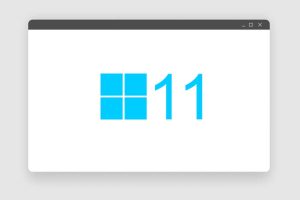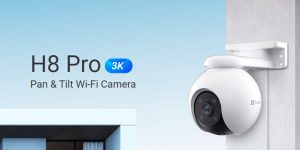
If you invest in good music-making software, composing will become a lot less difficult for you to do. This means not having to struggle as much and writing down your ideas a lot more quickly than you probably do as soon as possible. Also it indicates that you have a backup of it and that you may access it in order to make edits or share it as necessary.
However, this does not mean that you cannot write down your music because among the greatest tools for music notation will recognize what you have written and change it right away. This is an excellent method for writing in the manner in which you are most at ease while still having the ability to digitize your work after you have completed it.
These softwares are designed to be user-friendly so that you can concentrate on the musical creation process, and as a result, they are very easy to understand and use. This indicates that also a novice user may quickly become productive with this program. Nonetheless, it provides sufficient detail to be of use to a pro in the majority of situations.
There has never been a more interesting time to be a music notation software developer than right now. Musicians can use these potent programs to set up music notation and create sheet music. These tools are also referred to as scorewriters or music-making software. Sheet music may be created by adding notes, pauses, accidentals, and other notation symbols to staves, and there are many different notation programs to choose from. There are also many free music notation software.
Having said that, many of them come with some advanced features, which might or may not be enough to warrant a higher price tag. Many of them integrate cleanly with instruments such as MIDI keyboards, DAWs, and VST plugins, making it easier for music producers of all stripes to streamline their processes.
1. Notion 6
You won’t find a better piece of software for composing music anywhere else.
Specifications
When it comes to writing, arranging, and producing music, Notion 6 is the music notation software that has it all. It allows for the import and export of MIDI data, the use of VST plugins, and comes with a collection of virtual instruments.
Pros
- Simple, drag-and-drop capabilities in a user-friendly interface.
- Combining notation editing with audio/MIDI editing.
- Allows musicians to work together in real time from afar.
- Support for VST plugins expands the program’s functionality.
Cons
- Not as robust as competing programmes in terms of complex notational options.
- There may be a severe learning curve for certain people.
- It’s possible that it’s not as well-known or supported as other software packages in its field.
The most all-inclusive music-making software which was evaluated was Notion 6, which came equipped with every important editing tool that one would use at some point. Composers are able to enter notes into the program in a number of different ways, including playing virtual instruments on-screen, employing a MIDI keyboard, or dropping notes directly into the staves in digital form. It is also possibly the best free music notation software. The finest audio editing and audio converter software may also be handy for music creating.
The program is extremely flexible and versatile. Because of a new software update, the program is now able to recognize handwriting, so one can write own score on a tablet using a smart pen. This opens up a whole new world of possibilities.
We found its music instrument sample collection, which features sounds from artists including the Symphony Orchestra, the Wooten brothers and Neil Zaza, to be really impressive. Because the program is compatible with Apple’s macOS, Microsoft’s Windows, and Apple’s iOS, you may begin composing an arrangement on your desktop computer and completely altering music on the mobile devices, such as an iPad or an mobiles.
It consists of a straightforward organization, and the tool palettes are all in their appropriate places. As a result of the program’s creators continually improving and enhancing it, the user interface is updated with brand-new features on a regular basis. The most recent updates feature an expanded selection of playback musical instruments as well as enhancements to the Time-synced video player. With these updates, you are now able to view a video clip while simultaneously precisely composing a piece that fits alongside the video.
2. Sibelius
Sibelius is user-friendly, and there is a no-risk trial version available.
Specifications
Sibelius is a music notation programme widely used by professional musicians, composers, and music publishers. It has sophisticated tools for scoring, playing back, and publishing complicated works.
Pros
- Professional composers will appreciate the program’s extensive complement of high-end notation capabilities.
- Superior sound effects library with sophisticated playback options.
- Easy compatibility with all your favourite audio programmes and devices.
- A lot of people helping out and many of tools to use.
Cons
- The cost is greater than the cost of similar music notation programmes.
- For first-time users, the UI may seem complicated.
- Because of its intricacy and depth, the programme has a more challenging learning curve.
Even though it is a professional-grade tool designed for experienced composers, the program’s user interface is surprisingly straightforward. Similar to first one, this music-making software receives frequent updates and adjustments from a group of programmers. When comparing the two, we found that Notion’s instrument sounds were somewhat more impressive, and Sibelius lacked a “video” window that would have allowed us to score a film while watching it. Therefore, it comes in at number two on our guide.
Leaving that aside, the programme is actually very good. To input notes, you can either use the on-screen keyboard, play a digital instrument, or connect a keyboard that uses MIDI to your computer through a USB port. Automatically adding rests and note appearances means you may speed through melodies without stopping to make adjustments to the score.
Additionally, the program provides useful features for group work. You may communicate your completed score or saved progress to other collaborators by clicking the share icon in the toolbar. After that, the Avid MediaCentral Platform will analyze it and provide you with a URL which is accessed using a web browser on any machine. If you and some other Sibelius user are working together, you may make changes in scores and then push the changes to the other person’s copy of the score without having to create a URL and also export a file.
You can get an app that goes along with the music-making software, but it will cost you a few bucks if you want it. The smart pen may be used in conjunction with this program to write straight into the staves of your iPad, thereby turning it into a notepad. When you are dealing with the best free music notation software, you know that you will create bangers.
3. MuseScore
MuseScore is the most impressive piece of free music composing software available.
Specifications
MuseScore is an open-source programme that allows users to create and share sheet music without having to pay any licencing fees. It allows for playback as well as conventional notation and tablature.
Pros
- Cost nothing to use, therefore it’s perfect for students and novices.
- There is a sizable amount of user-generated content and a bustling online community.
- Easy-to-navigate menus and controls.
- Allows for a variety of musical notation options.
Cons
- Compared to comparable professional-grade applications, it lacks several sophisticated capabilities.
- There’s a chance the sound collection isn’t as comprehensive or high-quality.
- There is a lack of compatibility with other audio programmes and devices.
MuseScore, a music notation software that is both open source and freely available for usage. Both the Mac systems and Windows may use it without any problems. The best-paid programs we looked at both have less features and fewer tools, but this one is free. The best-paid programs have fewer features and fewer tools.
The user interface is clear and clean, making it easy to find your way around. You’ll discover the input tools you may use on the left side of screen, and on the right, the inspector will provide details regarding the notes you’ve entered using the tools you’ve entered on the left.
Even if you were able to connect your MIDI keyboard without encountering any problems, you may still enter notes into MuseScore by making use of the program’s virtual piano if you do not have access to a MIDI keyboard. In addition, you may leave additional comments for the staff by utilizing the shortcuts that are available to you on your computer’s keyboard or mouse.
MuseScore is compatible with MusicXML and conventional MIDI files, allowing you to import them from other popular notation software. After you’re done editing the score, you may save it out in a variety of formats, including a visual image, a MusicXML document, or a recording of the music. MuseScore is an easy method to learn how to write music using this music-making software, and it does not involve any financial investment on your behalf.
Despite the fact that the musical instrument tracks are not as accurate or expressive because those few in the leading music notation programs that we analyzed, MuseScore is a straightforward method to accomplish this goal.
4. Noteflight
Although it is not software per se, using it will result in significant financial and storage benefits.
Specifications
Noteflight is an online music notation programme that lets you write, revise, and exchange sheet music with other musicians. There’s a free version, and a paid one with a bunch of extras.
Pros
- The web-based interface facilitates communication and teamwork from anywhere at any time.
- Cloud-based scorekeeping makes it simple to collaborate on and share results.
- There is a free version with the bare essentials of notation.
- The premium edition has several extra fancy extras.
Cons
- There are restrictions on the free version’s functionality and storage capacity.
- Its feature set can be lacking in comparison to competing products.
- Inadequate support for working without an active internet connection.
3 different versions of Noteflight are available; the most basic one is free and called Noteflight Basic. With this version, you may generate and update up to ten different scores. The educational community is Noteflight Learn’s primary target audience. Google Classroom is one of the popular LMSs with which it is compatible. After researching many expensive music notation systems, we settled on Noteflight Premium as the most cost-effective option.
You can’t install this programme on your computer, however the website allows access from any web-enabled gadget. The toolbar is fully customizable and includes everything you need to create and modify the most fundamental of layouts. It is also possible to import and work with music notation formats like MIDI and MusicXML. However, as the complexity of the composition increases, the online medium slows down and responses more slowly.
If you often use notation music-making software, Because the higher-end edition’s functionality is so similar to one of the best programmes we tested, we strongly suggest investing in it. Along with listening to these eighty-five standard component sounds, players can also record their own audio contributions for inclusion in any score. Furthermore, the Premium membership provides access to the music market, whereby complete songs and their promotion may be bought and sold. You’re able to employ the program’s straightforward and helpful volume mixer to make sure the produced MP3 as well as WAV files has adequate volume settings.
5. Finale PrintMusic
This is the ideal option for beginners who have access to a computer running Windows.
Specifications:
For those just starting out with music notation, Finale PrintMusic has all the essentials you need to write and print your own sheet music. This program is a cheaper alternative to the industry standard Finale.
Pros
- The price is low enough that students and novices may afford it.
- Intuitive design makes it simple to pick up and start using right away.
- Simple notation software for writing and printing music scores.
Cons
- Doesn’t have all of Finale’s pro functions and features.
- Sound effects and playback choices are very lacking.
- Professional composers and consumers with more complicated score demands may want to look elsewhere.
The process in Finale PrintMusic is quite user-friendly, and the program’s interface is simple to operate. It features a comprehensive collection of editing canvas also, tools for entering notes, all of which are simple to locate and work with.
You may enter notes using the mouse on your computer, a digital musical instrument digitally interfaced with a computer; also known as a MIDI keypad; lacks the functionality of an online piano but has many additional note-entry options. When you are done making annotations, you may play aloud your work using the Human Replay feature. This function will play your composition using any of the many in-built devices (including instruments with strings, trumpets, and percussionist instruments).
Symphony has a remarkable array of compatible file types for output. It can generate publisher-quality, printed files as well as visual files including PDFs. You may share your finished score with the world by exporting its contents as a file with the extension MP3. Because of its user-friendliness and comprehensive set of notation tools—including a specialized PrintMusic program—Finale has become the industry standard for music creation software.











